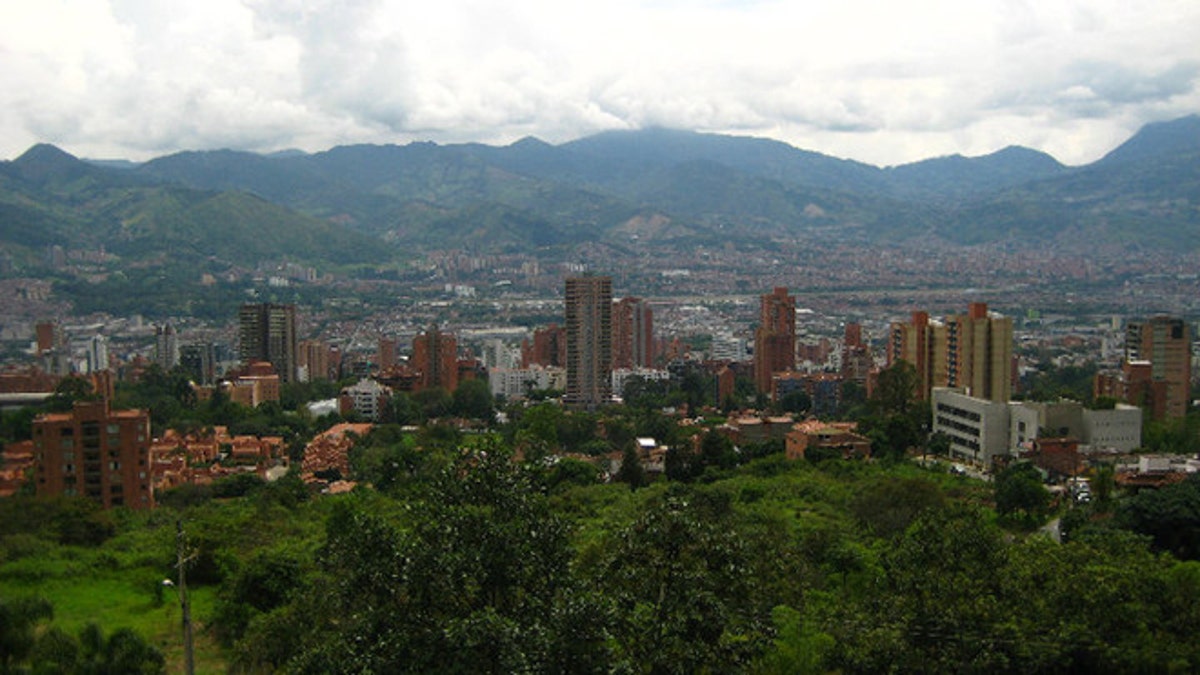
A look at the city of Medellín, Colombia. (Andrew O'Reilly)
Party-goers in Colombia’s second largest city rang in the New Year with a round of violence that left nine people dead at a swanky gathering at a suburban mansion.
On the evening of Dec. 30, 16 people arrived at a large home in the Medellín suburb of Envigado. The next morning a cleaning lady found nine bloodied bodies – five men and four women – sprawled across two floors of the home.
Police in Medellín theorize that the killers used silencers on their firearms because neighbors reported not hearing any sounds of gunfire or struggle, but they did report seeing several trucks arrive at the mansion. Local authorities also found a motorcycle, an armored van with the plate covered and found a gun on the home’s premises.
Intelligence suggests that the home was a meeting place for Medellín’s main organized crime group, La Oficina de Envigado, where the men planned to celebrate the end of the year and discuss promotions within their ranks, said Medellín's police chief, General Yesid Vasquez.
Police added that Jorge Mario Marín, alias "El Morro;" Hugo Fernando Uran Mesa, alias "El Panadero," and Carlos Andres González Hernández, alias "El Mosco” – all known members of La Oficina – were among the dead. The four women, three of whom had their hands still pressed against their faces when they were killed, were found in one room and are believed by authorities to have been entertainment for the bosses.
Medellín police are bandying about two theories about the massacre.
One is that there was an argument between two groups at the party, ending in the slaughter at the mansion. The other is that an independent group of gunmen broke into the party and opened fire.
In the 1980's and 1990's, the city was the poster child for the Colombian drug trade and home base of Pablo Escobar, the infamous Colombian drug lord who was killed on a Medellín rooftop by a joint U.S.-Colombian operation in 1993.
After his death, violent crime continued to rise in the city as factions once under Escobar’s control vied for control of territory. Diego Murillo, alias "Don Berna," of La Oficina eventually wrestled control of the organization and held it until his extradition to the U.S. in 2006.
Since then there has been a bitter and sometimes bloody power struggle within the organization, which has lead to one hypothesis about the Dec. 30 massacre. Another Colombian drug trafficking organization, Los Urbaños, is looking to make inroads in Medellín, however, and could also be responsible for the slaughter.
“The key question is who were the other men who arrived at the celebrations and later left. Police believe these men to be the killers and that they are other senior members of the Oficina,” wrote Jeremy McDermott of Insight Crime. “However it is not only the Oficina that is eyeing the criminal prize of Medellin. From their stronghold to the north, the Urabeños are looking to take over the city's underworld, allowing them to unite the city with the Caribbean coast where they control drug trafficking routes.”
Despite the recent massacre, Medellín, once known as the world’s most violent city, has seen a renaissance in recent years as violent crime rates have dropped, business has flourished and the “City of the Eternal Spring” has seen an influx of tourists.
Follow us on twitter.com/foxnewslatino
Like us at facebook.com/foxnewslatino
